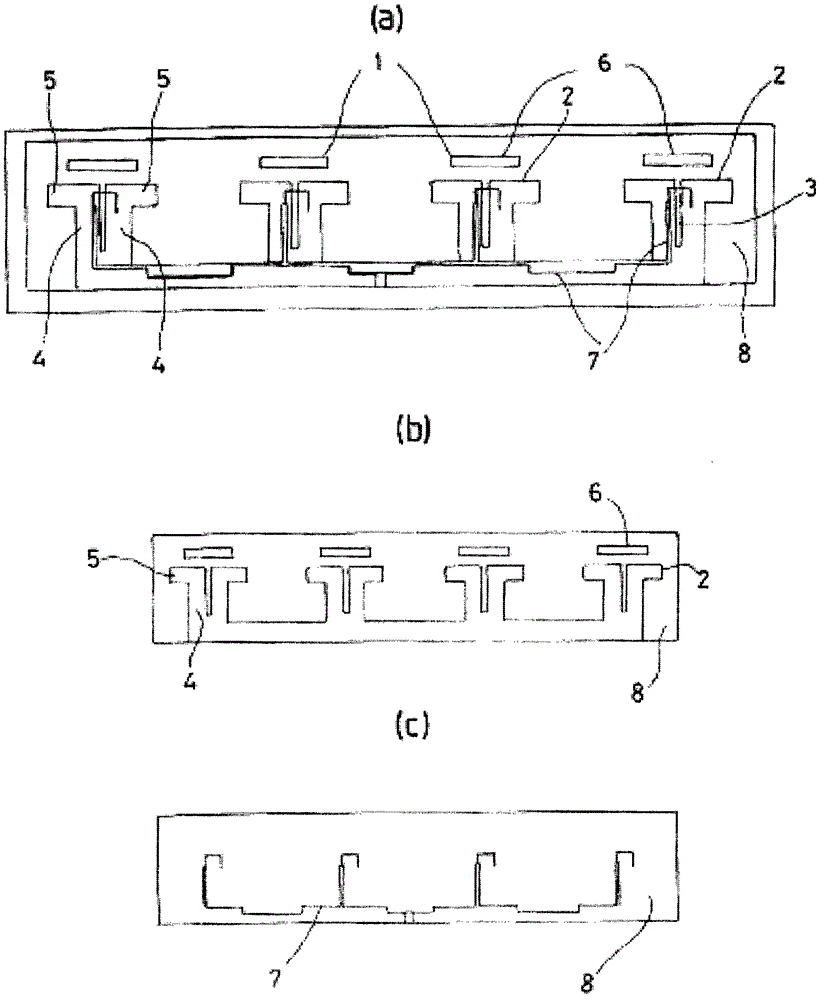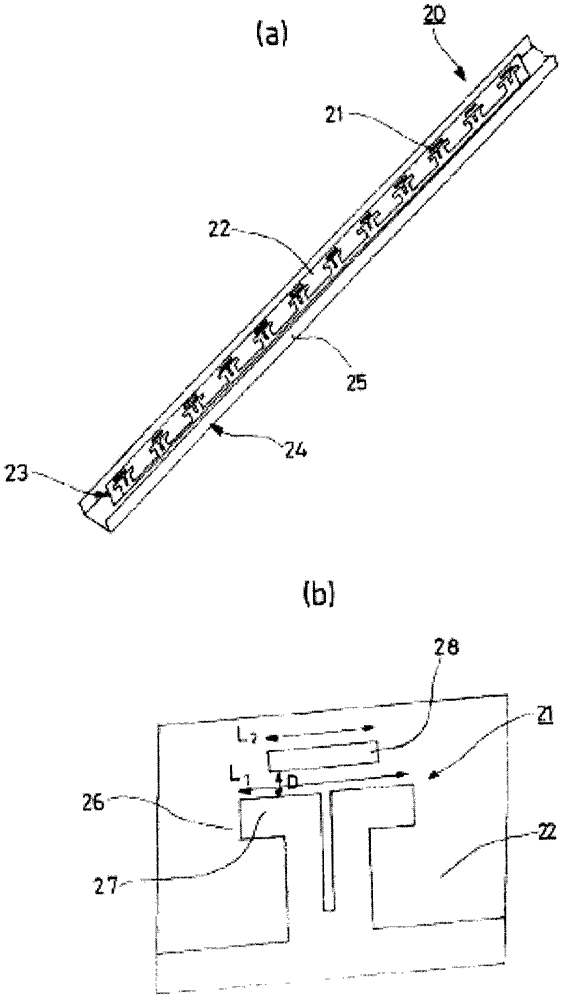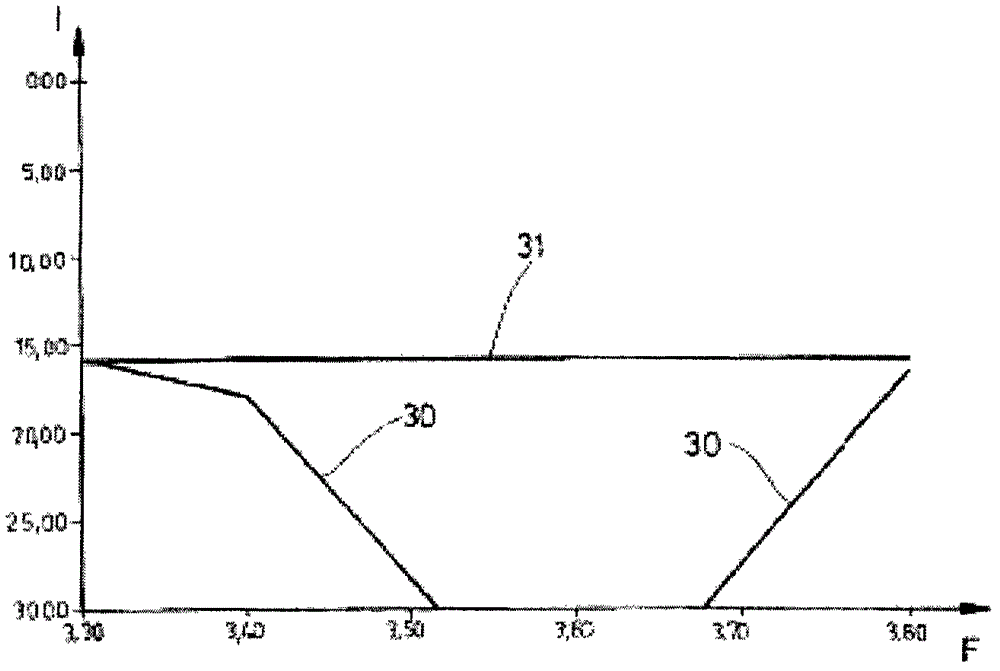Radiating antenna element
A radiation unit and antenna radiation technology, which is applied in antennas, antenna unit combinations with different polarization directions, antenna coupling, etc., to achieve the effects of improving radio performance, improving directivity, and improving multi-band operation capabilities
- Summary
- Abstract
- Description
- Claims
- Application Information
AI Technical Summary
Problems solved by technology
Method used
Image
Examples
Embodiment Construction
[0043] figure 1 a to figure 1c depicts an embodiment of a planar rectilinear arrangement of vertically polarized radiation elements 1 . The radiating element 1 contains a half-wave dipole 2 consisting of two half-dipoles separated by a slot 3, each half-dipole comprising a base 4 supporting an arm 5. The two arms 5 of the dipole 2 define radiation lines. To increase gain and bandwidth, another radiation line is added on top of this radiation line, which is formed by parasitic or "director" elements 6 that are not electrically connected to the dipoles 2 . The dipole 2 is fed by a wire 7 connected to a balun, which is not shown in the figure. The strip dipole 2 and parasitic element 6 are printed with low dielectric constant ε rr (1rr figure 1 b), the substrate is, for example, a Teflon and glass plate from the company "TACONIC" with the product code "TLX-08". The wires 7 are printed on the reverse side of the dielectric substrate 8 ( figure 1 c).
[0044] figure 2 a an...
PUM
 Login to View More
Login to View More Abstract
Description
Claims
Application Information
 Login to View More
Login to View More - R&D
- Intellectual Property
- Life Sciences
- Materials
- Tech Scout
- Unparalleled Data Quality
- Higher Quality Content
- 60% Fewer Hallucinations
Browse by: Latest US Patents, China's latest patents, Technical Efficacy Thesaurus, Application Domain, Technology Topic, Popular Technical Reports.
© 2025 PatSnap. All rights reserved.Legal|Privacy policy|Modern Slavery Act Transparency Statement|Sitemap|About US| Contact US: help@patsnap.com



